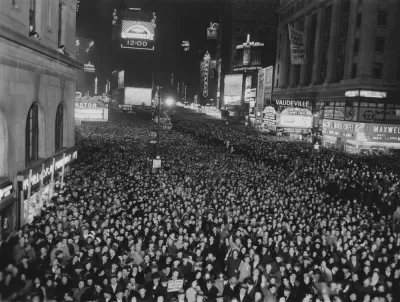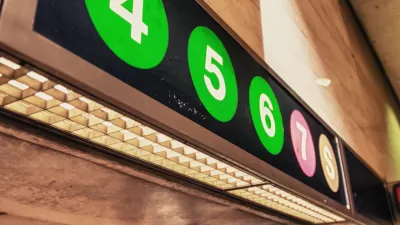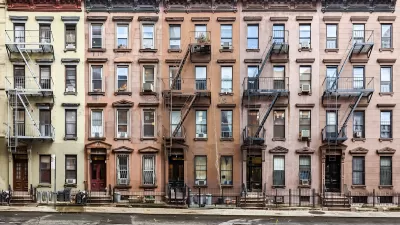For decades, New York City's boom times lay deep in the past. Now that the city's growing again, Aaron Renn says New York may need to take cues from the Sun Belt, of all places.

Like many of its northeastern brethren, New York had long been a manager of its own slow decline. But now, for the nation's biggest city at least, that has obviously changed. Aaron Renn writes, "One reason New York is struggling to deal with subway crowding – and housing and other matters – is that it is now facing a kind of problem northern cities haven't had to deal with in a long, long time: the problem of growth."
After losing population for years, the current boom period simply "refilled" the city to previous capacity. "This was almost like getting free money for places like New York. Their infrastructure had been built for a larger population – in some cities a much larger population – and so there was no need to expand it to accommodate the growth. Life was good."
But now, the city's resurgence threatens to overwhelm public and private infrastructure already in place. "Regardless of the specifics, the question is, what does New York need to do to start thinking like a growth city again? [...] If NYC doesn't figure it out, we already see the consequences: overcrowded trains and soaring housing costs [...]" as well as infrastructure that might not withstand, say, a string of future Hurricane Sandys.
FULL STORY: Sun Belt Problems Come to New York City

Alabama: Trump Terminates Settlements for Black Communities Harmed By Raw Sewage
Trump deemed the landmark civil rights agreement “illegal DEI and environmental justice policy.”

Planetizen Federal Action Tracker
A weekly monitor of how Trump’s orders and actions are impacting planners and planning in America.

The 120 Year Old Tiny Home Villages That Sheltered San Francisco’s Earthquake Refugees
More than a century ago, San Francisco mobilized to house thousands of residents displaced by the 1906 earthquake. Could their strategy offer a model for the present?

In Both Crashes and Crime, Public Transportation is Far Safer than Driving
Contrary to popular assumptions, public transportation has far lower crash and crime rates than automobile travel. For safer communities, improve and encourage transit travel.

Report: Zoning Reforms Should Complement Nashville’s Ambitious Transit Plan
Without reform, restrictive zoning codes will limit the impact of the city’s planned transit expansion and could exclude some of the residents who depend on transit the most.

Judge Orders Release of Frozen IRA, IIJA Funding
The decision is a victory for environmental groups who charged that freezing funds for critical infrastructure and disaster response programs caused “real and irreparable harm” to communities.
Urban Design for Planners 1: Software Tools
This six-course series explores essential urban design concepts using open source software and equips planners with the tools they need to participate fully in the urban design process.
Planning for Universal Design
Learn the tools for implementing Universal Design in planning regulations.
Clanton & Associates, Inc.
Jessamine County Fiscal Court
Institute for Housing and Urban Development Studies (IHS)
City of Grandview
Harvard GSD Executive Education
Toledo-Lucas County Plan Commissions
Salt Lake City
NYU Wagner Graduate School of Public Service




























